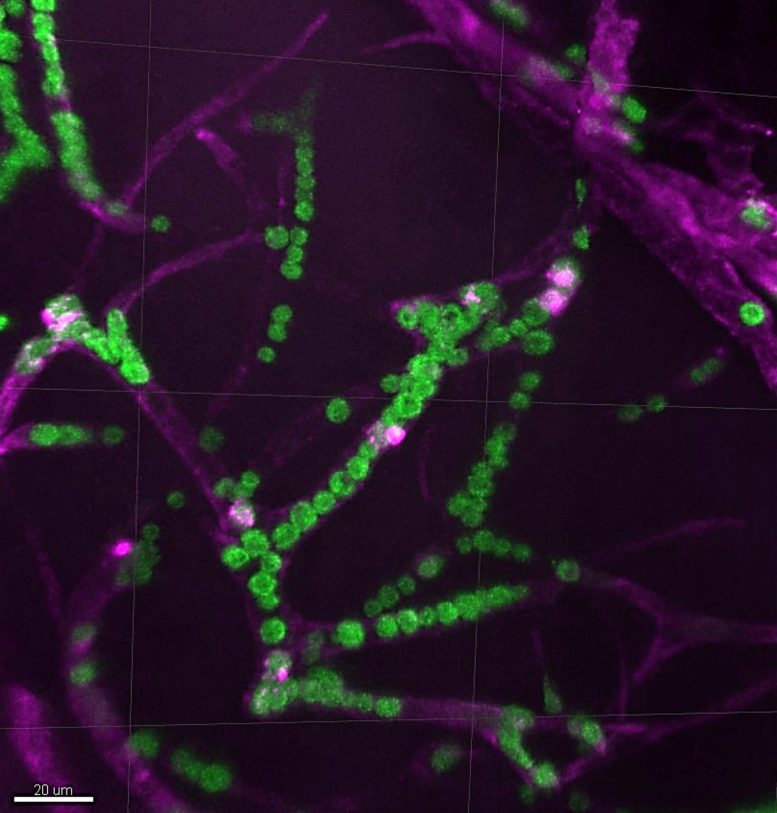New research reveals the atomic secrets of photosynthesis, providing insights into the complex process of chloroplast RNA polymerase transcription. This advancement holds promise for improving crop resilience and understanding plant growth mechanisms. Credit: SciTechDaily.com
The mysteries of photosynthesis have been unveiled at the atomic level, providing significant new insights into this plant super-power that transformed the Earth into a green landscape over a billion years ago.
John Innes Centre researchers used an advanced microscopy method called cryo-EM to explore how the photosynthetic proteins are made.
The study, published in Cell, presents a model and resources to stimulate further fundamental discoveries in this field and assist longer-term goals of developing more resilient crops.
Understanding Photosynthetic Protein Production
Dr Michael Webster, group leader and co-author of the paper said: “Transcription of chloroplast genes is a fundamental step in making the photosynthetic proteins that provide plants with the energy they need to grow. We hope that by understanding this process better – at the detailed molecular level – we will equip researchers looking to develop plants with more robust photosynthetic activity.” READ MORE...
The mysteries of photosynthesis have been unveiled at the atomic level, providing significant new insights into this plant super-power that transformed the Earth into a green landscape over a billion years ago.
John Innes Centre researchers used an advanced microscopy method called cryo-EM to explore how the photosynthetic proteins are made.
The study, published in Cell, presents a model and resources to stimulate further fundamental discoveries in this field and assist longer-term goals of developing more resilient crops.
Understanding Photosynthetic Protein Production
Dr Michael Webster, group leader and co-author of the paper said: “Transcription of chloroplast genes is a fundamental step in making the photosynthetic proteins that provide plants with the energy they need to grow. We hope that by understanding this process better – at the detailed molecular level – we will equip researchers looking to develop plants with more robust photosynthetic activity.” READ MORE...




